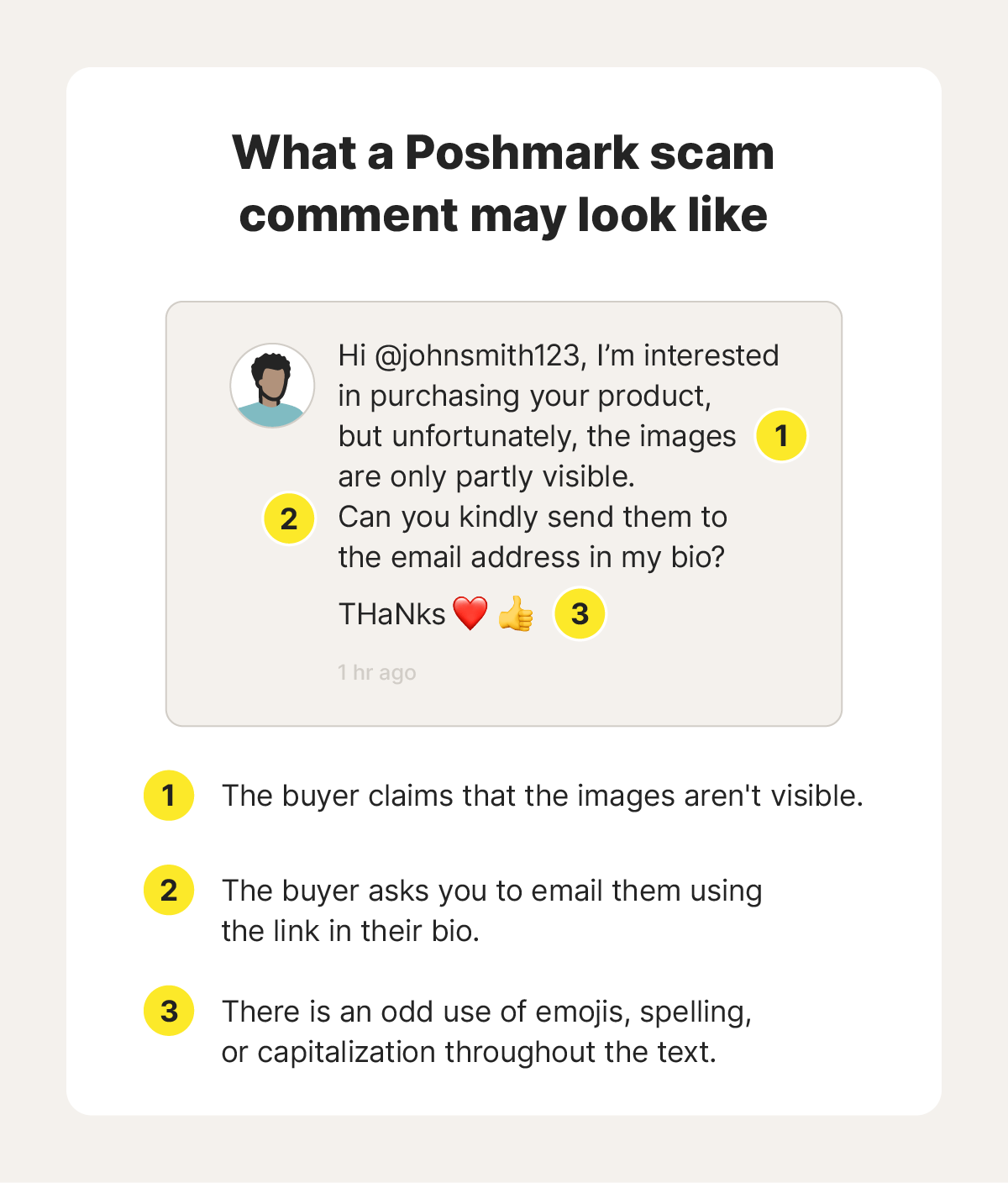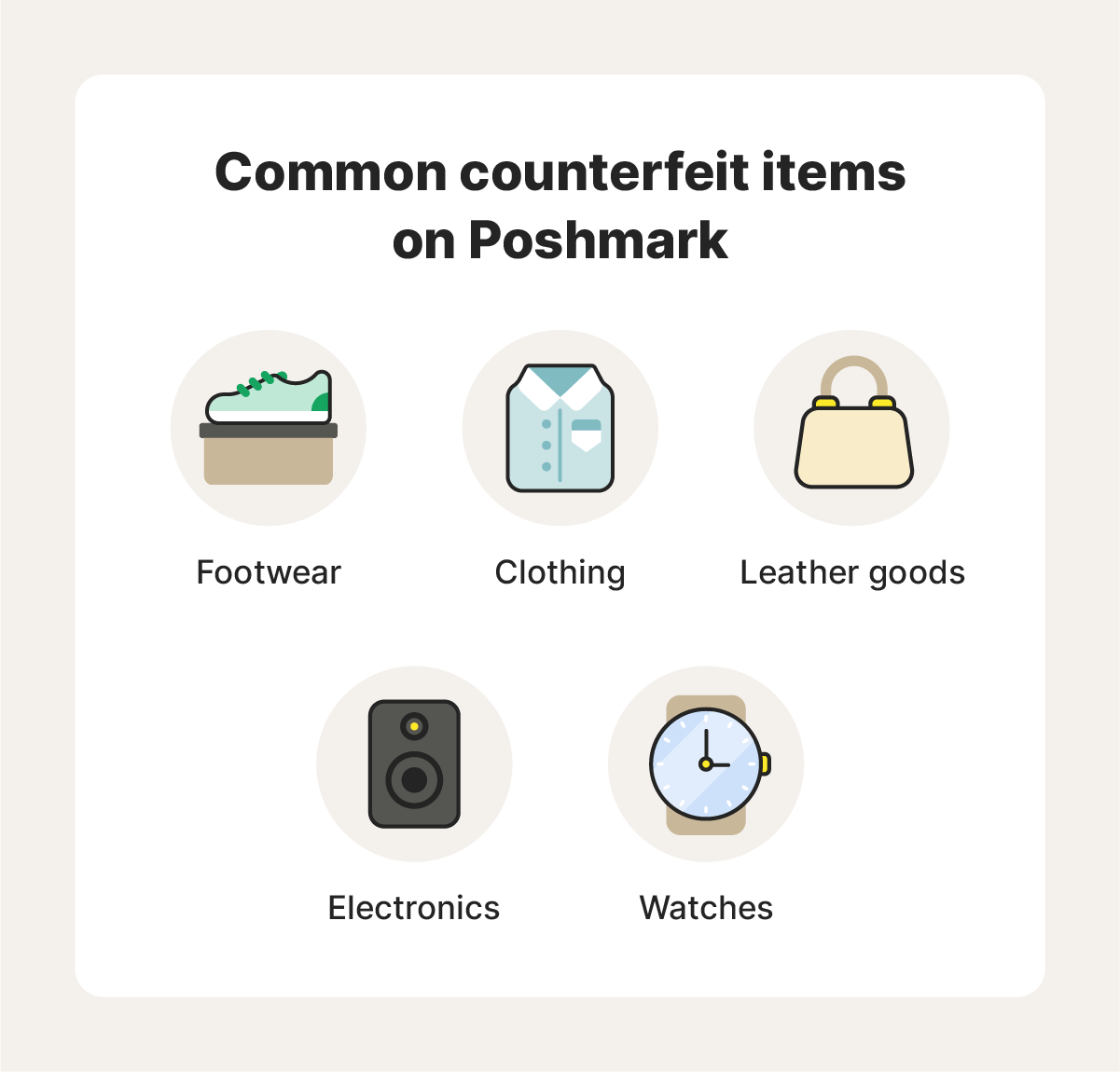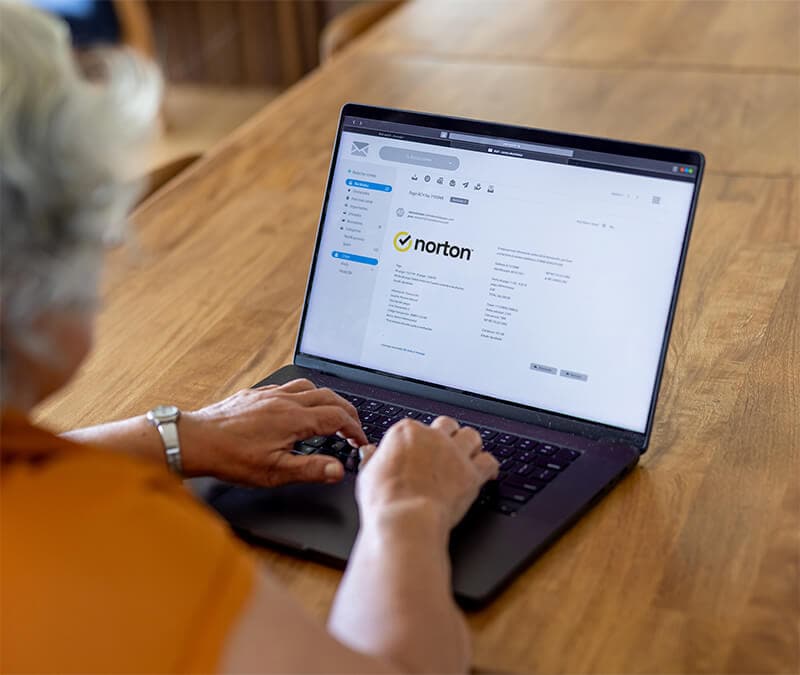Is Poshmark safe? 6 common Poshmark scams to look out for
Poshmark is a convenient place to buy and sell used items. But like most online marketplaces, there’s always the chance of running into a scam, and scammers target both Poshmark sellers and buyers. Learn which Poshmark scams to look out for, and get Norton 360 with its AI-powered scam-detection engine to help protect against scams and their fallout.

Poshmark is an online fashion resale marketplace for new and secondhand items. The platform helps buyers and sellers connect through a social, community-oriented shopping experience.
While the site can be a great place to shop or sell items from your closet, it also has its fair share of scammers. From counterfeit goods to fake accounts and payment schemes, there are several common scams users should be aware of.
Is Poshmark safe?
Generally, Poshmark is a safe space to shop and sell. But most online marketplaces have their fair share of scammers, and Poshmark is no exception. The platform uses multiple strategies, including Posh Protect, to reduce the occurrence of scams with varying degrees of success.
Want to score some unique finds on Poshmark without getting duped? Keep reading to discover the six most widespread scams on Poshmark and learn how to avoid them.
1. Buyer email scam
Some Poshmark scammers may comment on a seller's listing, pretending to be interested in the product. They may claim that the pictures posted “aren’t displaying well” on the website or app and ask the seller to email them clearer photos. However, once you send the email, the scammer will send you a phishing email to try to steal your personal information.
A few ways to spot a Poshmark buyer email scam include:
- A buyer insists photos are blurry when they look fine on your device.
- Comments from a buyer appear within minutes of you listing an item.
- Their profile shows a low follower count.
- The buyer asks you to contact them via the email in their bio.


2. Return fraud scam
In this scam, buyers abuse the return policy by claiming an item is “not as described.” They initiate a return to obtain a refund but send back a damaged or different item instead of the original. This allows them to keep the authentic item while tricking Poshmark into approving the refund. As a result, the seller loses both the product and the money from the sale.
Sellers can help prevent return fraud by using the following strategies:
- Create detailed listings with high-quality photos.
- Disclose any flaws in the listing.
- Take pictures or videos of the item during packing, showing its quality, packaging, and any identifying labels on the box.
3. Off-platform payment scam
The Poshmark off-platform payment scam exploits users looking to avoid platform fees. Both buyers and sellers can be targets of this scam. Scammers encourage P2P payments through apps like Venmo, Cash App, or Zelle, promising lower costs or exclusive deals.
However, Poshmark’s buyer protection, Posh Protect, only applies to transactions made directly on the platform. Once users leave Poshmark, they lose this safeguard, leaving buyers vulnerable to losing money without receiving the item and sellers at risk of receiving fraudulent checks or payments.
Additionally, scammers may request your contact details to “complete the transaction” and then use them for phishing attacks, sending fake payment links, emails meant to coerce you into giving them sensitive information, or messages laced with malware.
A few ways to spot off-platform payment scams include:
- Explicit requests for off-platform payment from buyers or sellers.
- Too-good-to-be-true deals like extremely low prices.
- Promises of “fee-free” transactions.
4. Missing bundle item scam
Some scammers may purchase multiple items from a seller's closet, creating a bundle. Once their bundle arrives, they claim one or more of the purchased items are missing.
When a buyer files a claim for a missing bundle item, Poshmark usually requires the seller to issue a refund and accept a return of the bundle. However, the scammer keeps the allegedly “missing” items, causing the seller to lose both the item and the money.
Strategies to avoid the missing bundle item scam include the following:
- Document the packaging process, taking pictures of every item included.
- Securely package and seal each item and ensure everything is visible.
- Include a packaging list detailing each item included in the package.
5. Counterfeit goods scam
Nearly every online marketplace, including Poshmark, has scammers selling counterfeit luxury items. Many users on Reddit report ordering luxury purses, shoes, and sunglasses on Poshmark only to realize that they’re fakes once the items arrive.
Luckily, there are a few simple ways to spot a counterfeit item, including:
- The item's care card is the wrong color or font.
- Designer items carry a much cheaper price than they retail for.
- Brand details like logos and stitching don't match what you find on the brand's official website.
- The seller has very few reviews.
- The designer has never created an item like the one listed.


6. Fake emails from Poshmark
Some scammers send phishing emails that look like official correspondence from Poshmark. These emails may claim that your account is at risk of deactivation due to a failed payment or that you've made a sale that doesn’t exist. Their goal is to trick you into providing payment information or clicking a malicious link.
Watch out for the following signs of a fake Poshmark email:
- The sender's email address does not match the address of previous official Poshmark email correspondence.
- The message uses urgent language to pressure you into taking immediate action.
- The message asks you to click a link to update your credit card information.
How to spot a fake Poshmark seller
While you can’t see sellers’ negative ratings or reviews publicly on Poshmark, you should always check their listings. Ensure that item descriptions match the photos and that the prices are realistic for the items they’re selling. Consistent mismatches in any of this information signal that the Poshmark seller is a scammer.
Here’s a detailed breakdown of the signs of a Poshmark scam seller:
- Use of stock photos: Genuine sellers typically use their own photos, so be wary of listings that rely solely on stock images or images taken directly from the manufacturers’ websites.
- Vague descriptions: A legitimate seller usually provides detailed descriptions, including the brand, condition, and specific features or flaws. Vague descriptions are sometimes an attempt to hide quality issues.
- Suspiciously low prices: Extremely low prices, especially on luxury items, can be a red flag since scammers often use deep discounts to lure buyers.
- High volume of luxury items: A seller with a high volume of high-end items at discounted prices may be selling counterfeits.
- Multiple listings with the same items: A scam seller may have multiple listings featuring the same items in an attempt to increase their chances for sales. Sometimes, the same items and photos are listed for multiple sellers, too.
- Reluctance to answer questions: A trustworthy seller is generally responsive and willing to provide additional information or photos. Sellers who avoid questions or give evasive answers could be hiding something.
- Pressure to move off-platform: Be cautious of sellers who encourage you to complete transactions off Poshmark. This is a common tactic used by scammers to bypass Poshmark’s buyer protection policies and steal your personal information.
How to spot a fake Poshmark buyer
Spotting a fake Poshmark buyer is a challenge as you can’t view order history or reviews for other Poshmark users. But you can still look out for the following signs of a fake Poshmark buyer:
- Requests to move transactions off-platform: Fake buyers may ask to complete the sale outside Poshmark, promising to avoid fees or expedite payment. Scammers may request unusual payment methods like cashier’s checks or third-party apps, which are not protected by Poshmark policies.
- Overly-complicated payment instructions: Fake buyers sometimes send detailed, unusual instructions, like requesting multiple steps to confirm payment or fake links for “transaction verification.”
- Requests for personal information: Scam buyers sometimes write to you and explain that the platform won’t process their payment unless they provide your phone number. Don’t fall for it — it’s a scammer looking to get your personal information.
- Suspiciously blank profiles: Fake buyers often use newly created accounts or profiles with no profile pictures or listings of their own, making it harder to verify their identity.
What to do if you fall for a Poshmark scam
If you fall for a Poshmark scam, immediately report it to Poshmark. If you lost money as a result of the scam, report it to your bank as well — you may be able to get your money back. Then take the following steps to help recover from a Poshmark scam and prevent further fallout:
- Invest in identity theft protection: Norton 360 Deluxe with LifeLock Select monitors millions of data points per second and alerts you if your compromised personal information is found on the dark web or in fraudulent credit applications.
- Report the user to Poshmark: Report the scam through Poshmark’s support center and provide as much detail as possible, including screenshots and transaction information.
- Update your passwords: Update passwords across all your accounts to help protect them from getting hacked. All passwords should be between 12 and 16 random characters — for help creating and managing complex passwords, use a trusted password manager.
- Monitor your financial accounts: Keep a close eye on your credit card transactions and bank accounts for any unusual activity, especially if you gave a scammer your payment information.
Shop safely on Poshmark
Learning about different Poshmark scams can help protect you while shopping or selling. For added security, get Norton 360 Deluxe, which features powerful scam-detection technology to help you identify scam emails, texts, and potentially fraudulent websites so you can shop online more safely.
Poshmark is a trademark of Poshmark, Inc.
Editorial note: Our articles provide educational information for you. Our offerings may not cover or protect against every type of crime, fraud, or threat we write about. Our goal is to increase awareness about Cyber Safety. Please review complete Terms during enrollment or setup. Remember that no one can prevent all identity theft or cybercrime, and that LifeLock does not monitor all transactions at all businesses. The Norton and LifeLock brands are part of Gen Digital Inc.








Want more?
Follow us for all the latest news, tips, and updates.